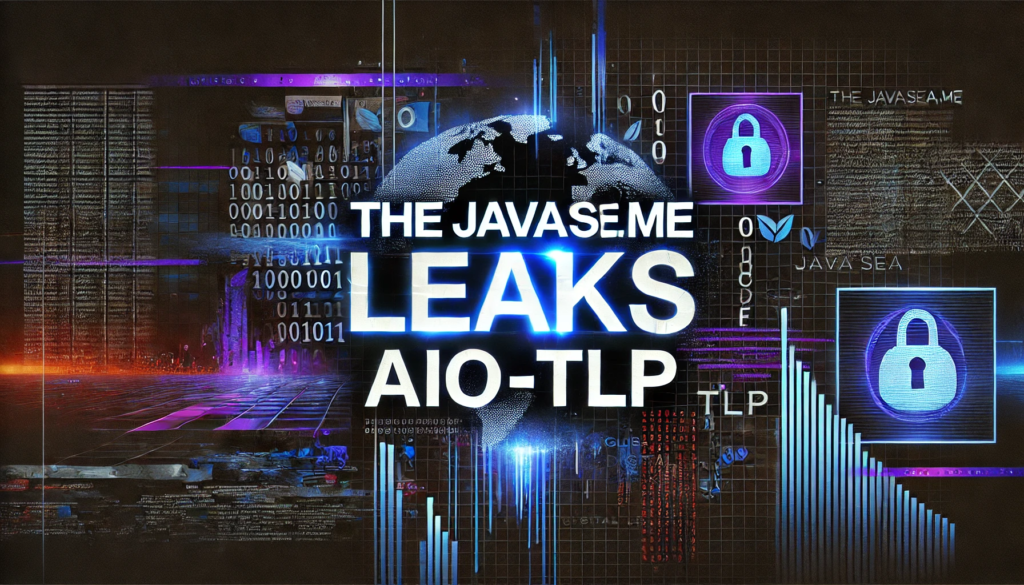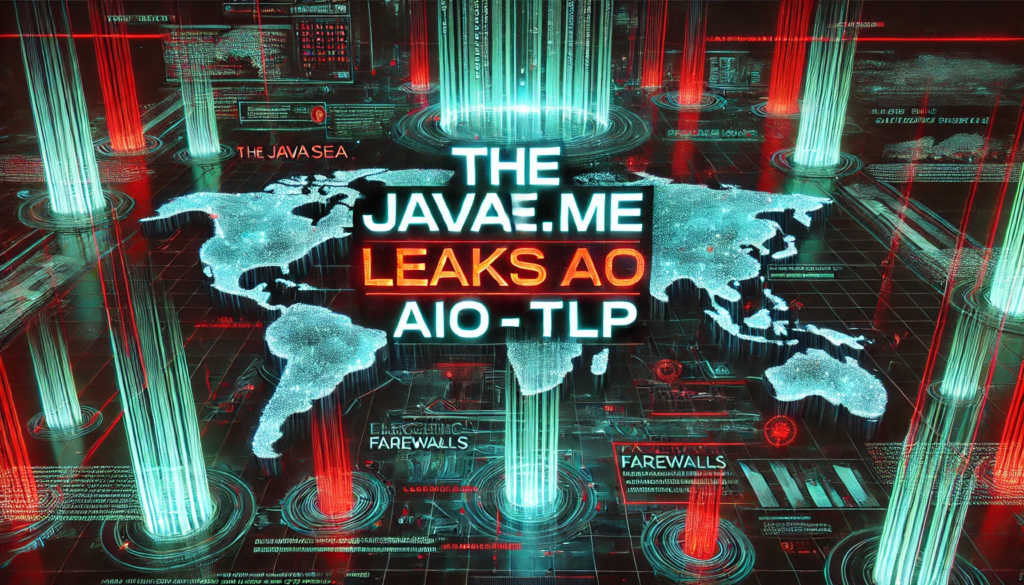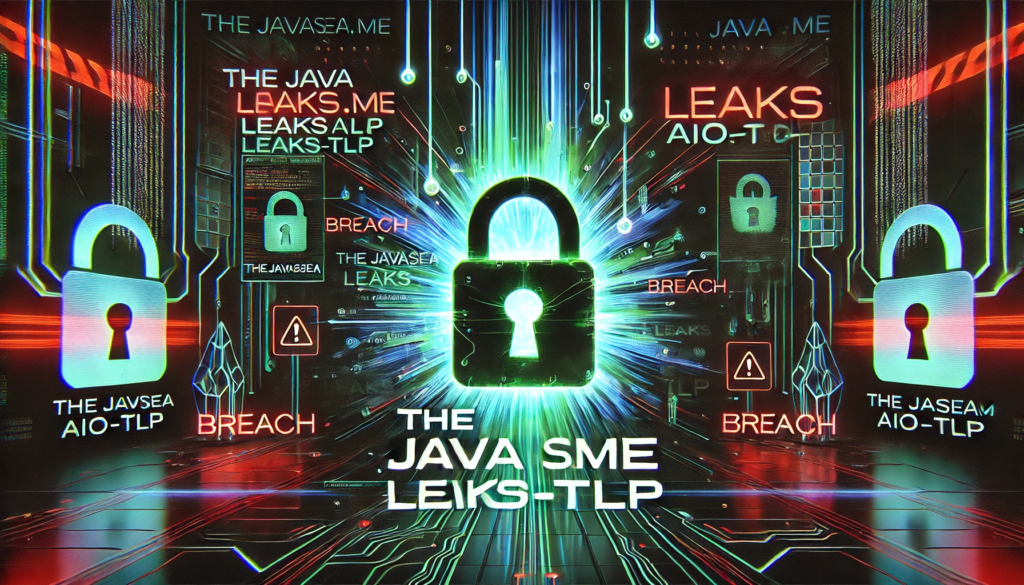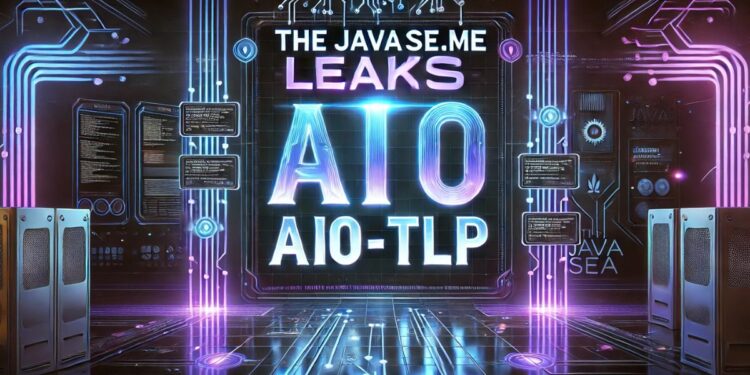The digital world was shaken by a significant breach at Thejavasea.me, an event that underscores the ongoing challenges in cybersecurity and data protection. This breach, known as Thejavasea.me Leaks AIO-TLP, involved the unauthorized access and dissemination of a vast array of sensitive data. The ramifications of this incident extend far beyond the immediate privacy concerns, highlighting systemic issues in how data is secured and managed in an increasingly interconnected environment.
Understanding the Scope of the Breach

The breach at Thejavasea.me exposed a wide variety of information, affecting countless users and businesses. The leaked data included personal identifiers, financial records, confidential business documents, and other sensitive data that was supposed to be protected under stringent security measures. This incident not only revealed the vulnerability of Thejavasea.me’s infrastructure but also the potential for catastrophic consequences when such large datasets are mishandled or exposed to cyber threats.
The Mechanisms of the Breach
Investigations into the breach revealed that multiple failures in security protocols contributed to the event. It appears that insufficient firewall protections, outdated security patches, and weak authentication processes allowed cyber attackers to infiltrate Thejavasea.me’s systems relatively easily. This breach serves as a critical lesson in the importance of comprehensive and up-to-date security strategies to guard against increasingly sophisticated cyber threats.
Immediate Reactions and Responses
The immediate reaction to the breach involved a scramble by Thejavasea.me’s security teams to limit the damage by securing compromised accounts and systems. Simultaneously, users were urged to change their passwords and monitor their accounts for unusual activity. The breach also prompted a broader industry response, with cybersecurity firms stepping in to offer support and advice on preventing similar incidents.
Long-term Implications for Data Security

The long-term implications of Thejavasea.me Leaks AIO-TLP are profound. The breach has sparked a renewed debate over the adequacy of existing data protection laws and the responsibilities of companies in safeguarding user data. There is a growing consensus that legislative and regulatory frameworks must be strengthened to keep pace with the technological advancements and evolving cyber threats.
The Role of Regulatory Bodies
In the wake of the breach, regulatory bodies have become increasingly involved in overseeing data protection practices. There is pressure on these agencies to enforce more stringent compliance requirements and to hold companies accountable for lapses in security that lead to data breaches. This incident has clearly illustrated the need for a more proactive approach from regulators to ensure that data privacy is not compromised.
Impact on Trust and Consumer Behavior
One of the most significant impacts of Thejavasea.me Leaks AIO-TLP is the erosion of trust among consumers. Data breaches not only compromise personal information but also damage the reputations of the companies involved. Consumers become more cautious and skeptical about where and how they share their personal information, which can lead to broader changes in online behavior and preferences.
Technological Innovations in Data Security

In response to such breaches, there is an evident acceleration in the development of more robust data security technologies. Innovations such as blockchain, advanced encryption techniques, and AI-driven security protocols are becoming more mainstream as companies seek to fortify their defenses against data breaches. These technologies offer new ways to protect data and detect potential security threats before they lead to a breach.
Preparing for the Future
Companies must take a proactive stance in preparing for future threats by implementing comprehensive data security strategies. This involves not only adopting the latest in security technology but also fostering a culture of security awareness among employees and stakeholders. Regular audits, vulnerability assessments, and security training programs are essential components of a robust security posture.
Conclusion: Lessons Learned and Moving Forward
The Thejavasea.me Leaks AIO-TLP breach is a stark reminder of the vulnerabilities that exist in the digital world and the continuous need for vigilance in data security. For organizations of all sizes, the incident serves as a call to action to reassess and strengthen their data protection measures. Moving forward, embracing advanced technologies, fostering a culture of security, and complying with regulatory requirements will be key to safeguarding against similar breaches. As we navigate this digital age, the lessons learned from Thejavasea.me must not be forgotten, but rather used to build a safer and more secure digital environment for all users.
Frequently Asked Questions
1. What is Thejavasea.me Leaks AIO-TLP?
- Thejavasea.me Leaks AIO-TLP refers to a significant data breach involving the exposure of a large dataset containing sensitive personal and business information.
2. How did Thejavasea.me Leaks AIO-TLP occur?
- The breach occurred due to vulnerabilities in Thejavasea.me’s digital infrastructure, which were exploited by unknown cyber attackers.
3. What type of information was exposed in Thejavasea.me Leaks AIO-TLP?
- The exposed information included personal data, financial details, and proprietary business information.
4. What can individuals do to protect themselves from such breaches?
- Individuals should monitor their accounts for any suspicious activity, use strong passwords, and enable two-factor authentication on their digital accounts.
5. What should organizations learn from Thejavasea.me Leaks AIO-TLP?
- Organizations should enhance their cybersecurity measures, conduct regular security audits, and train employees on the importance of data protection to prevent future breaches.


















